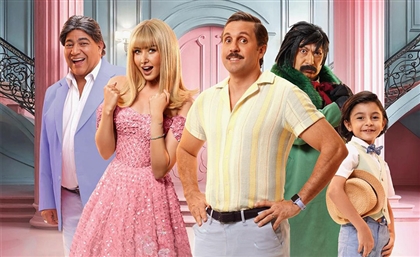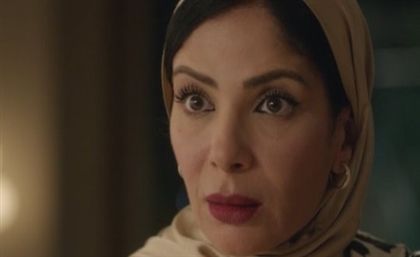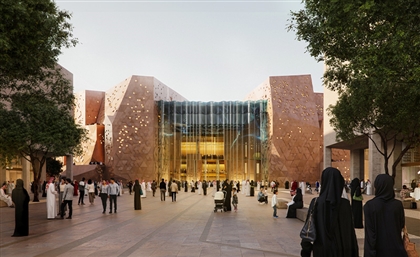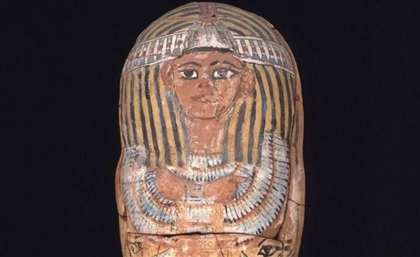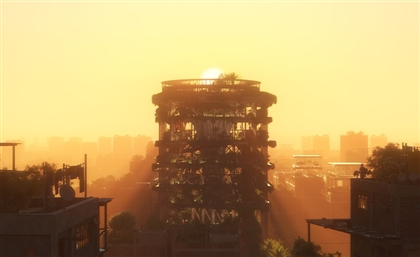14 Pivotal Gay Representations in Egyptian Film History
Egyptian cinema's representation of same-sex relations may not be plentiful, but it's worth analysing to better understand society's views on homosexuality.
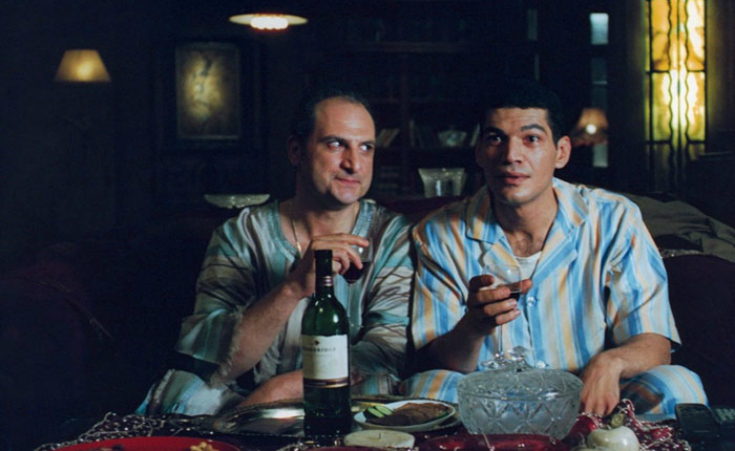
Given how much of a taboo homosexuality is in Egyptian society – and how the mere mention of the world 'mithliyya' can cause controversy, chaos, and complete disapproval of all kinds – you'd think that it's something strange and unseen. But, isn't cinema – even if sometimes distorted – a reflection of our realities? Granted, the portrayals in Egyptian film are hard to find; even spotting 100 amidst the colossal industry of Egyptian cinema and its plethora of productions is not a large number – but it's worth noting.
What's interesting is how these representations worked in correlation with the times; for example, in the past, you'd find plenty of stereotypical representations of the effeminate male who is the sidekick of a belly dancer, who also serves the purpose of comic relief. More than that, some film directors used homosexuality as a way to illustrate and translate the downfall of Egypt under the sociopolitical conditions of the time. A common theme was how homosexual characters – usually rich and powerful – are exhibited as preying on weaker members of the society, who give in for the sake of money or lack of power. It also can't be overlooked that some of these representations condemn the characters in many ways, making sure to let society know that many of them were 'externally' influenced into practicing homosexuality, most likely for having gone through sexual abuse as a child. At the end, they end up getting killed, going back to 'normal', or committing suicide. Here's a list we compiled of some of the ways Egyptian cinema represented gay characters and same-sex relations:
Al Tariq Al Masdood (Dead End Road) – 1957
One of the earliest films in Egyptian cinema that recorded homosexuality in subtle ways. The story follows the life of Fayza (Faten Hamama) who tries to earn an honest living; in her journey, she works as a teacher and stays with her colleagues in a residence. One of the other teachers, Hosniyya (Malak El Gamal), who has a slighltly masculine appearance and demeanour, makes several advances on Fayza. The comments range from wanting to see her in a nightgown (while she wears pyjamas) to hating men. This representation, while a bit stereotypical, is quite revolutionary for its time.
7amam Al Malatili (Malatili Bathhouse) – 1973
This movie was actually censored for some time when it was released; it is set around the time of Israeli occupation in the town of Ismailia, which leads the main character Ahmad (Mohammed El Arabi) to move to Cairo – there, he stays at the Malatili bathhouse. He encounters different characters in the bathhouse, mainly Raouf, the gay artist who uses the bathhouse to pick up men. The character indulges in physical relations with male prostitutes, something pointed out in Samar Habib's study of Female Homosexuality in the Middle East: Histories and Representations, which criticises the lack of emotion in the character and contemplates the film's purpose of portraying Egypt's instability at the time it was set.
Jenoun Al Shabab (Crazy Youth) – 1975
This film interestingly enough, depicted the era of the hippies. Yet, again, another artist, Essmat (Sanaa Younis) represents the lesbian. Her character is quite complicated, and it was similar to that of Hosniyya in Al Tareeq Al Masdood. She hated men, because of her daddy issues that had to do with him exposing her to unwanted sexual experiences at a young age. The character, at the end, commits suicide, when her 'girlfriend' and muse, Dalia leaves her to get married. We're not even sure if the delicate and young Dalia was forced into this relationship by dominant and older Essmat, but it may be considered the first Egyptian film to clearly and explicitly depict female homosexuality – regardless of the fact that it was solely to portray 'crazy youth' who stray off the morals of society.
Al So3ood Ela Al Haweya (Rising to Downfall) – 1978
This film shows the character of Abla (Madiha Kamel) who engaged in a lesbian affair with a French woman, Marline. The film's approach is actually quite interesting because the purpose of the relationship was motivated by politics. Abla is a student off to study in France and, all of a sudden, she finds herself lured into the Mossad and works for Israel – one of the ways that happens is through Marline inviting her into bed, and Abla accepting.
Mosaggal Khatar (Highly Dangerous Man) – 1991
The character in this Adel Imam film is named Toto or Tamer, portrayed by Hatem Zulficar. The character is shown as extremely feminine, and he even gets a few comments about how he's not man enough, but 'ironically' he works as a pimp's bodyguard. Why? Because he's an extraordinary karate player – he can take down anyone, and the film shows that in several scenes. We find the representation quite unique in the way it shows Toto as polar opposites in scenes – we're not sure what we're supposed to make of that, but it's a step towards the feminine man not having any underlying depth or skills.
Mercedes – 1993
One of Egyptian cinema's favourite films in the 90s by Yousri Nasrallah, this film was revolutionary in gay representation. The character of Gamal (Magdy Kamel) was unapologetic about his sexuality, and even had a steady boyfriend, Ashraf (Bassem Samra). This is one of those films that can be categorised under LGBT films because Gamal, here, flees the life of the rich and the bourgeois and lives in the city and immerses himself with other sects of society. Gamal, who is a bohemian to say the least, is an artist who is in a committed relationship more or less. The character, however, still has aspects to his existence that blend in well with Egyptian society – like his love for football. It's commendable of Nasrallah to represent gays as 'normal people' who can love, live, and laugh.
Rashsha Garee'a (Dare to Give) – 2001
This comedy starring Ashraf Abdelbaqi and Yasmeen Abdelaziz is about aspiring actors Salmawi and Mima who do just about everything to reach their goal of being stage actors. One of the directors Salmawi was supposed to make a deal with, Shawkat Halabi, turns out to be a gay man who takes advantage of young actors while having them as his boy toys in return. Salmawi literally runs away from him. Quite flawed gay representation, but it adds to the impossibility of "I'll do anything to reach my dream," we're guessing?
Deil Al Samaka (Fishtail) – 2003
This is only one scene, but it's quite prophetic of how we deal with homosexuality as a taboo. The main character, Ahmad (Amr Waked), gets a new job to monitor electricity in homes – that gets him to see many layers of our complex society and exposes him to what's only seen behind closed doors. One day, he enters the home of an older gentleman who makes advances on him, which he refuses. The man apologises and explains the concept of desire and human nature when it comes to sex. Ahmad says, "It's your freedom, what you do is your own business." The older man emphasises that it was not his choice to be that way – which is a phenomenal step and statement to make – but that nonetheless, he is not happy.
Amaret Yacoubian (Yacoubian Building) – 2006
One of the most renowned portrayals of homosexuality in Egyptian cinema is through the characters of Hatem (Khaled El Sawy) and Abderabbou (Bassem Samra). The affluent Hatem preys on young lower-class men and has a fetish for the darker-skinned ones. Abderabbou is one of his many lovers. However, what's problematic with this portrayal is that, while it was groundbreaking for Egyptian cinema, Hatem is shown as a sex-obsessed man who takes advantage of poorer men's need for money and who lures them into bed. But that's not even the worst part; the tragedy is that he gets what he deserves at the end, apparently, Which is being hung to death by one of the boys who ends up tricking him before he does.
7eena Maysara (When Things Get Better) – 2007
This film's 'lesbian scene' caused massive backlash, and it wasn't even due to the bizarre portrayal of the lesbian character who had no substantial purpose in the plot. It was for the fact that Egyptian cinema had not explicitly displayed lesbians for decades, and it all seemed like too much for the audience and the critics to take in at once. In this film, Nahed (Somayya El Khashab), who hails from the slums and deals with her scandalous wedlock pregnancy and an onslaught of other activities, ends up seeking refuge in the home of a woman (Ghada Abdelrazek) who forcibly tries to have her way with her in bed. Nahed, in tears, asks if that's all anyone ever wants from her, to which the lesbian responds "Like you have anything else for people to want?"
Bedoon Reqaba (Uncensored) – 2009
Another portrayal that puts Egyptian cinema's take on LGBT characters into question. The film is much like Jenoun Al Shabab (1975); it depictrs unsupervised, unmonitored teens and how that gets them into immoral lifestyles that can only be condemned. In the film, Sherine (Ola Ghanem) is a spoiled, rich girl who gets her friend to bring over girls she can have sex with. She sexually harasses another female student at her university, which really gets us to see the other side of why she does the horrible things she does: Sherine was sexually harassed by her female cousin at a young age, and that's why her (un)chosen sexuality has become 'natural' for her.
Rasa'el Al Bahr (Messages From the Sea) – 2010
This film portrays lesbians by choice, for the most part, and that's why very little can be said to criticise. The film follows the main character, Yehia (Asser Yassin), returning to where he grew up in a coastal town. His childhood sweetheart, Karla, who happens to be a tailor and designer, just also happens to have an affair with one of her customers, Reham. We don't see many aspects of that relationship, but the positive bit is that Karla seems happy and at peace.
Wahed Saheeh (A Whole One) – 2011
We're not sure how to feel about this one, but basically the main character, Abdallah (Hani Salama), is having an affair with Farida (Rania Youssef). Farida happens to be totally unhappy with her marriage with Eyad (Zaki Fattin Abdelwahhab) but stays for her social prestige – her unhappiness comes from her husband's homosexuality and his inability to satisfy her. Both her and her husband are in this marriage for the sake of their child and avoiding the social stigma around divorce – especially since she married rich for the sake of moving up the social class ladder.
Asrar A'elya (Family Secrets) – 2013
This film was highly anticipated as it actually discusses a homosexual youth's navigation of society and his family while maintaining this dark secret, and while trying to fulfill his desire through relationships. Hats off for making a film wholly dedicated to the theme, but we were disappointed to learn that this also wasn't a 'natural' choice but was the result of his brother perpetually sexually abusing him throughout his childhood. The film ends with the main character Marwan (Mohammed Mahran) telling his family about his older brother, who they cut off forever, and Marwan 'living normally' –or rather no longer being a homosexual because he was able to cross the obstacle and the reason for his behaviour.
- Previous Article Dr.Sisilove or How (Not) To Diffuse A Bomb
- Next Article 9 Games Egyptian 90s Kids Will Remember
Trending This Week
-
May 01, 2024




